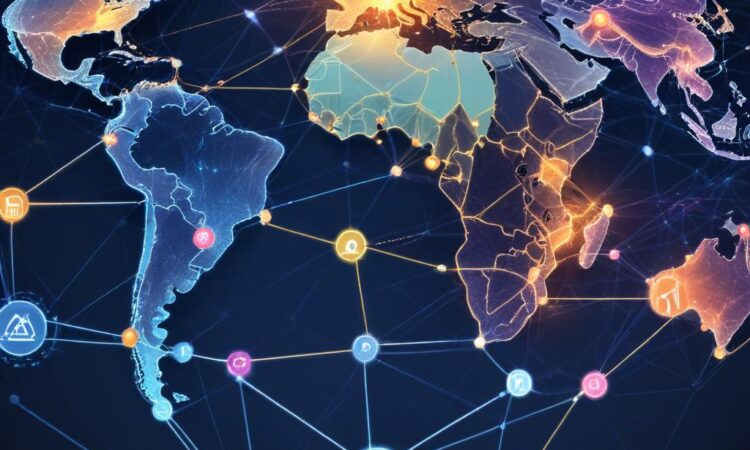Supply Chain Disruptions and Resilience Efforts
While easing somewhat, supply chain bottlenecks continue to pose significant challenges for businesses across various sectors, but particularly within the manufacturing and technology industries. The lingering effects of the global pandemic, coupled with geopolitical instability and unforeseen events, have highlighted the vulnerabilities inherent in globally interconnected supply chains. These disruptions have led to increased costs, production delays, and shortages of essential goods, impacting everything from consumer electronics to automotive production and even healthcare supplies.
The ramifications of these disruptions are far-reaching. Businesses face increased uncertainty in planning and forecasting, struggling to meet consumer demand and maintain profitability. Consumers experience higher prices and reduced availability of products, impacting their purchasing power and overall economic well-being. Governments, meanwhile, are grappling with the implications for economic growth, inflation, and national security.
The Nature of the Challenges
The complexity of modern global supply chains makes them inherently susceptible to disruptions. A single point of failure, whether it’s a natural disaster, a port closure, or a political crisis in a key supplier nation, can have cascading effects across the entire network. The reliance on just-in-time inventory management, while efficient in normal times, leaves little room for error when unexpected events occur. Furthermore, the concentration of manufacturing and sourcing in specific regions increases vulnerability to localized disruptions.
The semiconductor chip shortage, for example, dramatically illustrated the impact of concentrated production. A disruption in a single chip fabrication plant can cripple entire industries reliant on those components, causing widespread delays and shortages. Similarly, disruptions to shipping and logistics, whether due to port congestion, labor shortages, or container shortages, have resulted in significant delays and increased costs for businesses.
Beyond physical disruptions, geopolitical factors also play a significant role. Trade wars, sanctions, and political instability can disrupt supply chains by creating barriers to trade, increasing costs, and creating uncertainty for businesses. The ongoing conflict in Ukraine, for example, has significantly impacted the supply of essential commodities, including wheat and energy, causing price spikes and shortages globally.
Resilience Efforts: A Multi-pronged Approach
In response to these challenges, governments and businesses are actively pursuing strategies to improve supply chain resilience. This involves a multifaceted approach that incorporates several key elements:
Nearshoring and Regionalization:
One prominent strategy is nearshoring, which involves relocating manufacturing and sourcing closer to home markets. This reduces transportation costs, lead times, and the risks associated with long-distance shipping. Regionalization, a related concept, focuses on building more localized supply chains within specific geographic regions, creating greater resilience to disruptions in distant areas.
While nearshoring offers advantages in terms of resilience, it also presents challenges. It can lead to higher labor costs, potentially impacting competitiveness. Moreover, the availability of skilled labor and appropriate infrastructure in nearshore locations needs to be carefully considered.
Diversification of Sourcing:
Another crucial element is diversifying sourcing. Reliance on a single supplier for critical components creates a significant vulnerability. Businesses are increasingly seeking multiple suppliers for key inputs, reducing their dependence on any one source and mitigating the risk of disruptions from a single supplier failure.
Diversification, however, requires careful planning and management. It can increase complexity and costs, requiring businesses to manage relationships with multiple suppliers and ensure consistent quality across different sources.
Technological Advancements in Logistics:
Technological advancements are playing a crucial role in enhancing supply chain resilience. Real-time tracking and monitoring systems provide greater visibility into the movement of goods, enabling businesses to anticipate and respond more effectively to potential disruptions. Artificial intelligence (AI) and machine learning (ML) are being used to optimize logistics, improve forecasting, and reduce waste.
Advanced analytics provide valuable insights into supply chain performance, identifying vulnerabilities and areas for improvement. Blockchain technology can enhance transparency and traceability, improving the security and efficiency of supply chains.
Inventory Management Strategies:
Traditional just-in-time inventory management strategies are being reassessed in light of recent disruptions. Many businesses are adopting more robust inventory management practices, holding higher levels of safety stock to buffer against unexpected events. This, however, comes with increased costs associated with warehousing and storage.
Collaboration and Information Sharing:
Improved collaboration and information sharing across the supply chain are crucial for effective resilience. Open communication between suppliers, manufacturers, distributors, and retailers allows for better coordination and faster responses to disruptions. This can involve sharing real-time data on inventory levels, transportation schedules, and potential risks.
Government Policies and Regulations:
Government policies play a significant role in shaping supply chain resilience. Policies that promote diversification, investment in infrastructure, and the development of domestic industries can enhance resilience. Regulations that ensure transparency and accountability within supply chains can also improve performance and reduce risks.
The ongoing effort to build more resilient supply chains is a complex and evolving process. It requires a coordinated approach involving businesses, governments, and other stakeholders. While the challenges remain significant, the investments in nearshoring, diversification, technology, and improved collaboration are crucial steps towards creating more robust and sustainable supply chains for the future.
The journey towards supply chain resilience is a continuous one, requiring ongoing adaptation and innovation to address the ever-changing landscape of global trade and geopolitical uncertainty. The proactive implementation of these strategies will be crucial in mitigating future disruptions and ensuring the stability and efficiency of global commerce.
Further research and development in areas such as predictive analytics, autonomous transportation, and sustainable supply chain practices will be vital in strengthening global supply chain resilience in the years to come.
The long-term goal is not merely to react to disruptions but to proactively anticipate and mitigate them, creating supply chains that are both resilient and sustainable.

